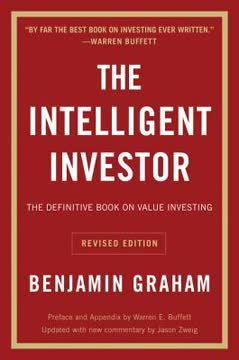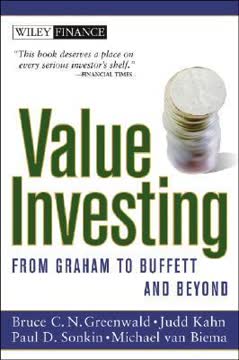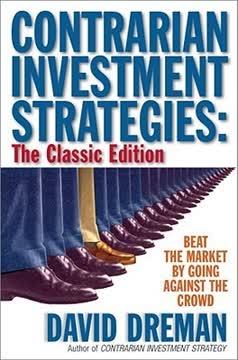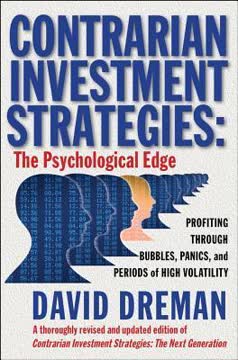Key Takeaways
1. Conventional Investment Methods Fail to Beat the Market
To judge from the record of professional investors presented in chapter 1, fundamental research has been no more successful than technical analysis.
Professional underperformance. Despite employing sophisticated techniques like fundamental analysis (valuing companies based on financials) and technical analysis (predicting prices from charts), the vast majority of professional money managers consistently underperform market averages like the S&P 500. Studies show that over decades, 90% of managers have lagged the market.
Technical analysis limitations. Technical analysis, relying on historical price patterns and indicators, has been repeatedly shown by academic research to be ineffective. Stock price movements are largely random in the short term, making charting and timing strategies akin to guesswork.
- Studies show random price movements.
- Chart patterns often give false signals.
- Computerized "star wars" techniques haven't changed this.
Fundamental analysis challenges. While based on sound principles, fundamental analysis struggles with the complexity of forecasting future earnings and valuing companies accurately. Even the best analysts make large errors, and their stock picks, as a group, have historically underperformed.
2. Expert Forecasts Are Consistently Unreliable
Experts are often wrong—sometimes remarkably so.
Widespread expert error. History is replete with examples of experts across diverse fields – from military strategy and technology to arts and economics – making predictions that turned out to be wildly inaccurate. This isn't limited to subjective fields; even in seemingly scientific areas, forecasts frequently miss the mark.
Analyst forecast inaccuracy. Security analysts, whose earnings estimates are crucial for modern stock valuation, demonstrate a high rate of error. Studies covering decades and thousands of forecasts show average annual errors of 44% or more, far exceeding the small margins investors believe are necessary for accurate valuation.
- Average annual error is ~44%.
- Only ~25% of forecasts are within ±5% of actual earnings.
- Errors are high across all industries, including "high-visibility" ones.
Overconfidence and optimism. Analysts tend to be both overconfident in their ability to forecast precisely and overly optimistic in their estimates. This psychological bias, coupled with career pressures to issue buy recommendations, leads to systematically inflated expectations that are frequently disappointed.
3. Investor Psychology Drives Predictable Market Errors
The major thesis of this book is that investors overreact to events.
Beyond rationality. Contrary to the efficient market hypothesis, investors are not purely rational decision-makers. They are heavily influenced by psychological factors, including cognitive biases and the powerful dynamics of group behavior.
Cognitive biases. Mental shortcuts (heuristics) that are useful in daily life lead to systematic errors in complex, uncertain environments like the stock market. Examples include:
- Representativeness: Overweighting superficial similarities to past events (e.g., comparing 1987 crash to 1929).
- Law of Small Numbers: Overgeneralizing from limited data (e.g., chasing short-term "hot" performance).
- Availability: Overemphasizing recent or emotionally salient events (e.g., reacting strongly to dramatic news).
Group influence. In situations lacking clear objective reality, people rely on the opinions and behavior of others (social reality). This leads to a convergence of opinion, often towards the most confident or authoritative voices, reinforcing biases and driving crowd behavior.
4. Overreaction Leads to Significant Stock Mispricing
People consistently overprice the "best investments," be they growth stocks, initial public offerings, or companies involved in telecommunications.
Extrapolation of trends. Investors tend to extrapolate current trends and expectations far into the future. They become overly optimistic about companies with seemingly bright prospects ("best" stocks) and overly pessimistic about those with lackluster outlooks ("worst" stocks).
Valuation extremes. This overreaction pushes the valuations of "best" stocks (high P/E, P/CF, P/BV, low yield) to excessive premiums, while "worst" stocks (low P/E, P/CF, P/BV, high yield) are driven to deep discounts relative to their intrinsic value.
Fundamentals vs. Perception. Studies show that the dramatic price movements between "best" and "worst" stocks are not primarily caused by corresponding dramatic changes in their underlying fundamentals. Instead, the mispricing is largely a result of investor overreaction to perceived prospects, which are often extrapolated far beyond what fundamentals justify.
5. Earnings Surprises Impact Stocks Predictably
Earnings surprises have a consistent and predictable effect on stock prices.
Differential impact. Earnings surprises (actual earnings differing from analyst forecasts) affect favored and out-of-favor stocks in diametrically opposite ways. This predictable reaction is a key mechanism by which market overreactions are corrected.
Positive surprises. For out-of-favor stocks, positive earnings surprises act as "event triggers," causing significant upward revaluations and sustained outperformance. For favored stocks, positive surprises are merely "reinforcing events" that confirm existing high expectations and have minimal long-term price impact.
Negative surprises. For favored stocks, negative earnings surprises are powerful "event triggers" that lead to sharp price drops and prolonged underperformance as investors' overly optimistic views are shattered. For out-of-favor stocks, negative surprises are "reinforcing events" that confirm low expectations and have little lasting impact on price.
6. Contrarian Value Strategies Consistently Outperform
Value strategies work with a vengeance!
Exploiting mispricing. Contrarian strategies capitalize on the predictable investor overreaction that leads to the mispricing of "best" and "worst" stocks. By systematically buying out-of-favor stocks (low P/E, P/CF, P/BV, high yield) and selling favored ones, investors can profit from the subsequent correction.
Historical evidence. Decades of research, including studies dating back to the 1930s and recent comprehensive analyses, consistently demonstrate the superior performance of contrarian value strategies compared to market averages and, especially, compared to investing in favored stocks.
- Low P/E stocks have significantly outperformed high P/E stocks.
- Low Price-to-Cash Flow and Price-to-Book Value strategies show similar outperformance.
- High dividend yield stocks also beat the market.
Industry-relative value. The principle of buying out-of-favor stocks also applies within specific industries. Buying the cheapest stocks within an industry, regardless of the industry's overall valuation, has also proven to be a successful strategy.
7. Contrarian Strategies Offer Superior Long-Term Odds
The probabilities of winning with this strategy are a gambler's or an investor's fantasy.
High probability of success. Statistical simulations based on historical data show that contrarian strategies offer exceptionally high probabilities of outperforming the market over the long term. For example, investing annually in low P/E stocks over 25 years has a greater than 99% chance of beating the market.
Compounding returns. While short-term results may vary, the consistent edge provided by contrarian strategies compounds significantly over time. Even modest annual outperformance translates into dramatically larger final wealth compared to market index investing.
Reduced trading. Contrarian strategies, particularly buy-and-hold approaches or those with minimal rebalancing, benefit from lower transaction costs and capital gains taxes compared to high-turnover strategies like momentum investing. This further enhances long-term returns.
8. Volatility Is Not the True Measure of Investment Risk
Volatility is not risk.
Academic definition flawed. The widely accepted academic definition of risk as volatility (how much a stock price fluctuates) is fundamentally flawed and misleading for long-term investors. Studies have shown no consistent correlation between volatility and return.
Real risks. True investment risk for most individuals saving for long-term goals (like retirement) includes:
- Loss of purchasing power: Inflation and taxes erode the real value of savings, especially in fixed-income investments.
- Financial distress: The risk of a company or investment failing due to financial problems.
- Overpaying: Buying assets at inflated prices due to speculative bubbles.
Misleading metrics. Risk metrics based on volatility, like beta, are backward-looking and fail to capture these crucial real-world risks. Relying on such metrics can steer investors towards seemingly "safe" but ultimately value-destroying investments and away from undervalued opportunities.
9. Stocks Are the Safest Long-Term Investment Against Inflation and Taxes
Clearly that stocks are a far better long-term investment than bonds or Treasury bills.
Inflation's impact. Since World War II, inflation has dramatically altered the investment landscape. It relentlessly erodes the purchasing power of fixed-income investments like bonds and Treasury bills, making them poor long-term stores of value.
After-tax, after-inflation returns. When adjusted for both inflation and taxes, the real returns on bonds and T-bills have been negative for significant periods since 1945. Investors in these assets have lost a substantial portion of their capital's purchasing power.
Stocks preserve wealth. In contrast, stocks have consistently provided positive real returns after inflation and taxes over long periods, including through periods of high inflation and market crashes. Productive assets like companies can adjust prices and earnings to keep pace with inflation, preserving and growing wealth over time.
10. Market Crises Present Exceptional Buying Opportunities
Crisis also opens the door to large profits.
Overreaction amplified. Market crises, whether financial or political, trigger extreme investor overreaction and panic selling. This drives prices of even fundamentally sound assets far below their intrinsic value, creating extraordinary buying opportunities.
Historical pattern. Analyzing major crises throughout history, from the Berlin Blockade to the 1987 crash and the 1990 financial crisis, reveals a consistent pattern: buying during the panic and holding for one to two years has yielded significant above-market returns in virtually every instance.
Value lifelines. During a crisis, value indicators like price-to-book value and dividend yield often reach extreme levels, providing clear "value lifelines" to identify deeply undervalued assets. Focusing on financially strong companies within distressed sectors further enhances the probability of recovery and profit.
11. Beware of Market Pitfalls and Misleading Performance
The moral is clear. Steer away from these sweeping generalizations based on flimsy evidence, wherever they occur.
Small-cap myth. The popular belief that small-cap stocks inherently outperform large caps over time is a myth based on flawed historical studies that failed to account for illiquidity, transaction costs, and survivorship bias. While small value stocks can outperform, small glamour stocks often underperform significantly.
Nasdaq and trading costs. Markets like Nasdaq, where many small companies trade, can have enormous bid/ask spreads and illiquidity, especially for smaller issues. These transaction costs can severely erode returns, often negating any theoretical advantage. Using limit orders and being aware of spreads is crucial.
Bogus performance. Be skeptical of performance claims, whether from mutual funds, money managers, or market indexes. Some records are based on flawed methodologies, survivorship bias, or even outright fabrication. Focus on long-term, audited records and understand the underlying investment strategy.
Last updated:
FAQ
What is "Contrarian Investment Strategies: The Next Generation" by David Dreman about?
- Contrarian investing focus: The book explains how investing in out-of-favor or undervalued stocks, and avoiding popular, overpriced ones, can consistently outperform the market.
- Investor psychology: Dreman explores how predictable behavioral errors and group psychology create market mispricings that contrarian strategies exploit.
- Critique of mainstream theories: The book challenges the Efficient Market Hypothesis and Modern Portfolio Theory, arguing that markets are not always rational.
- Practical guidance: It provides empirically backed, nontechnical strategies for both individual and professional investors to improve returns and manage risk.
Why should I read "Contrarian Investment Strategies: The Next Generation" by David Dreman?
- Proven outperformance: The book presents rigorously tested contrarian strategies that have beaten the market over decades, offering readers a higher probability of investment success.
- Behavioral insights: It reveals how investor overreaction and psychological biases create opportunities most investors miss.
- Avoiding common pitfalls: Dreman explains why popular investment methods and expert forecasts often fail, helping readers sidestep costly mistakes.
- Comprehensive approach: The book combines investment theory, psychology, and actionable rules for building disciplined, resilient portfolios.
What are the key takeaways from "Contrarian Investment Strategies: The Next Generation" by David Dreman?
- Contrarian strategies work: Buying low P/E, low P/BV, low P/CF, and high dividend yield stocks consistently outperforms the market.
- Investor psychology matters: Understanding and exploiting behavioral biases is crucial for investment success.
- Diversification and discipline: Holding 20-30 stocks across at least 15 industries and avoiding excessive trading are essential for risk management.
- Long-term focus: Patience and discipline are required, as contrarian strategies may underperform temporarily but win over time.
What are the main contrarian investment strategies recommended by David Dreman?
- Low Price-to-Earnings (P/E): Buy stocks with low P/E ratios for higher returns and lower risk.
- Low Price-to-Book Value (P/BV): Select undervalued stocks by book value, which have historically outperformed.
- Low Price-to-Cash Flow (P/CF): Favor stocks with low price-to-cash flow ratios for superior performance.
- High Dividend Yield: Invest in high-yield stocks for steady income and defensive strength, especially in bear markets.
How does David Dreman’s contrarian approach use fundamental indicators for stock selection?
- Financial strength: Focus on companies with solid balance sheets, low debt, and good interest coverage.
- Positive operating ratios: Choose firms with favorable operating and financial ratios to avoid structural weaknesses.
- Earnings growth: Prefer companies with recent earnings growth above the S&P 500 and conservative forecasts.
- Sustainable dividends: Look for above-average, growing dividend yields as a sign of management confidence and value.
What is the "Investor Overreaction Hypothesis" in David Dreman’s work?
- Definition: Investors consistently overvalue "best" stocks and undervalue "worst" stocks, causing prices to swing to extremes.
- Price movement patterns: Negative surprises hurt favored stocks more, while positive surprises benefit out-of-favor stocks disproportionately.
- Mean reversion: Over time, prices regress toward the mean as fundamentals do not change as dramatically as prices suggest.
- Empirical support: Studies confirm that overreaction, not fundamentals, drives much of the price movement in both directions.
How does investor psychology affect investment decisions according to David Dreman?
- Overconfidence and optimism: Investors and analysts are often too confident and optimistic, leading to systematic errors and overpricing.
- Behavioral biases: Common biases like anchoring, representativeness, and herd mentality cause mispricings and bubbles.
- Difficulty with contrarianism: Psychological and social pressures make it hard for most investors to buy unpopular stocks and sell favorites.
- Information overload: Even with abundant data, humans struggle to process complex information, resulting in poor forecasts and decisions.
How does David Dreman critique the Efficient Market Hypothesis (EMH) and Modern Portfolio Theory (MPT)?
- Unrealistic assumptions: EMH and MPT assume rational investors and risk measured only by volatility, which is not reflected in real markets.
- Empirical failures: Contrarian strategies have outperformed the market, contradicting EMH’s claim that markets are always efficient.
- Psychological factors ignored: These theories overlook cognitive biases and group behavior that lead to predictable mispricings.
- Better risk measures: Dreman advocates for risk definitions based on long-term capital preservation and purchasing power, not just short-term volatility.
What practical rules and advice does David Dreman offer for implementing contrarian investing?
- Avoid market timing: Market timing and technical analysis generally do not improve returns and can be costly.
- Diversify broadly: Hold 20-30 stocks across at least 15 industries to reduce risk and capture market inefficiencies.
- Low turnover: Minimize trading to reduce transaction costs and taxes, maintaining superior long-term returns.
- Stick to value: Consistently buy out-of-favor stocks and avoid chasing hot sectors or recent winners.
How should investors apply contrarian strategies during market crises and panics, according to David Dreman?
- Buy during panic: Crises create extreme undervaluation and exceptional buying opportunities for disciplined contrarians.
- Use value lifelines: Rely on fundamental measures like low P/E, strong financials, and high dividend yield to identify bargains.
- Diversify and assess strength: Spread investments across many companies and focus on those with solid financial positions.
- Be patient: Market recoveries can take time; holding through volatility is key to realizing contrarian gains.
What are the risks and challenges of small-cap and Nasdaq investing as discussed by David Dreman?
- High transaction costs: Small-cap and Nasdaq stocks often have wide bid-ask spreads and higher commissions, eroding returns.
- Liquidity issues: Many small stocks are thinly traded, making it hard to buy or sell without moving the price.
- Survivorship bias: Historical outperformance studies may be skewed by including illiquid or defunct companies.
- Fraud and manipulation: Small and bulletin board stocks are more prone to fraud and manipulation; use limit orders and caution.
Why do most professional analysts and money managers underperform the market, according to David Dreman?
- Forecasting errors: Analysts’ earnings estimates are often highly inaccurate and overly optimistic, especially for favored stocks.
- Career pressures: Analysts are incentivized to issue buy recommendations and avoid negative calls, compromising objectivity.
- Cognitive limitations: Even experts struggle with complex reasoning and tend to rely on flawed linear extrapolations.
- Market and social pressures: The need to conform and maintain relationships with companies further reduces forecast reliability.
Review Summary
Contrarian Investment Strategies is highly regarded by readers for its thorough analysis of market psychology and value investing principles. Dreman challenges efficient market theory and advocates for low P/E, P/B, P/CF, and high-yield stocks. The book provides valuable insights into investor biases, the dangers of IPOs, and the importance of long-term thinking. Readers appreciate Dreman's research-backed approach and find the book's strategies still relevant today, despite being written decades ago. Some criticize its repetitiveness but overall consider it a classic in investment literature.
Similar Books










Download PDF
Download EPUB
.epub digital book format is ideal for reading ebooks on phones, tablets, and e-readers.






